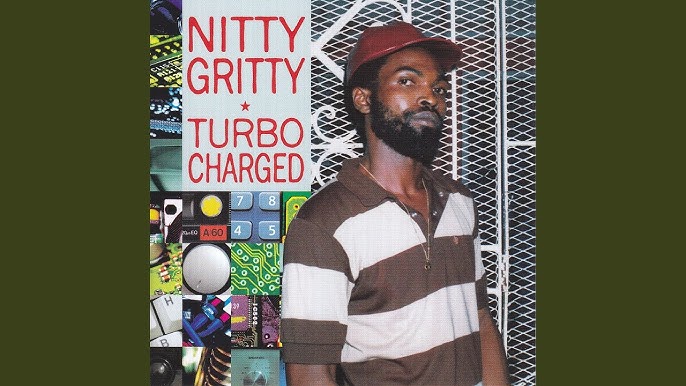False Alarm
Nitty Gritty

December 9, 2023
Glen Augustus Holness (Nitty Gritty) was a significant figure in the development of dancehall music in the early 1980’s. Born 1957 in the August Town section of Kingston, Jamaica, he was the second child of a large religious family. Holness initially trained as an electrician but found his love for the music scene in 1973. He formed “The Soulites” in the early 1970s and recorded his first solo singles in the early 1980’s for producers Sugar Minott and George Phang. With such a unique voice, he joined the Zodiac sound system. Later in 1985 he moved on to work with King Jammy’s, where he found breakthrough success with the hit “Hog inna Minty,” a Jamaican folk song and “Run down the world”. This marked the beginning of his impact on the emerging dancehall era. To captivate the occasion, George Phang released a clash album between Nitty and his mentee Saw, entitled “Tenor Saw meets Nitty Gritty”. He enjoyed further successful singles produced by Jammy’s and his debut album “Turbo Charged” was released for Greensleeves label in 1986, as was the split album with King Kong, “Musical Confrontation”.
Gritty moved to live in London before relocating to New York city, where he continued his recording. Further albums followed with “General Penitentiary” (1987), “Nitty Gritty” (1988), and “Jah in the Family” (1989). Nitty Gritty’s vocal style featured a high-pitched wail that complemented the new rhythmic patterns for producers in the new era. He excelled in the dancehall format, creating hits like “False Alarm” (counteraction to Ring the alarm), “Letting off Steam,” “Good Morning Teacher” and “Draw Mi Mark,” which were often sound-system tunes.
One notable aspect of Nitty’s approach was his inventive use of recycled material. Taking old traditional songs and reworked them to suit his style. His imaginative approach is evident in tracks like “Sweet Dreams,” where he combined the Eurythmics’ “Sweet Dreams” with the Stylistics’ “Betcha By Golly Wow.” In 1987, Nitty Gritty showcased his roots and culture side with the album “General Penitentiary” – addressing social and economic issues in Jamaica. This departure from the dancehall sound highlighted his versatility as an artist. Despite his international impact and success, the singers life was tragically cut short. On June 24, 1991, at the age of 34, he was shot dead in front of the Super Power Record Shop in Brooklyn, New York. Initially, there were reports that Nitty had an altercation with dj Super Cat who was later cleared of any involvement.
Nitty Gritty’s legacy lives on through his contributions to the dancehall genre and his ability to appeal to both dancehall and roots reggae audiences. His classic albums like “Turbo Charged,” “General Penitentiary,” and “Jah in the Family” showcased the range of his talent and the potential he might have achieved had he not met a premature end.

Later in 1985 he moved on to work with King Jammy’s, where he found breakthrough success with the hit "Hog inna Minty," a Jamaican folk song
Gritty moved to live in London before relocating to New York city, where he continued his recording. Further albums followed with “General Penitentiary” (1987), “Nitty Gritty” (1988), and “Jah in the Family” (1989). Nitty Gritty’s vocal style featured a high-pitched wail that complemented the new rhythmic patterns for producers in the new era. He excelled in the dancehall format, creating hits like “False Alarm” (counteraction to Ring the alarm), “Letting off Steam,” “Good Morning Teacher” and “Draw Mi Mark,” which were often sound-system tunes.

Nitty Gritty debut album
One notable aspect of Nitty’s approach was his inventive use of recycled material. Taking old traditional songs and reworked them to suit his style. His imaginative approach is evident in tracks like “Sweet Dreams,” where he combined the Eurythmics’ “Sweet Dreams” with the Stylistics’ “Betcha By Golly Wow.” In 1987, Nitty Gritty showcased his roots and culture side with the album “General Penitentiary” – addressing social and economic issues in Jamaica. This departure from the dancehall sound highlighted his versatility as an artist.

Nitty Gritty Meets Tenor Saw
HIGHLIGHTS & ACHIEVEMENTS
- Nitty Gritty is a trained electrician.
- 1973 – Formed the group “The Soulite”.
- 1986 – Released his first album “Turbo Charged”.
- One of the mentors of Tenor Saw.
- Considered one of the best artists in the dancehall era.
- He was a genius at turning old classics into his own style.
- Dubplate specialist who is known for sound clash tunes.